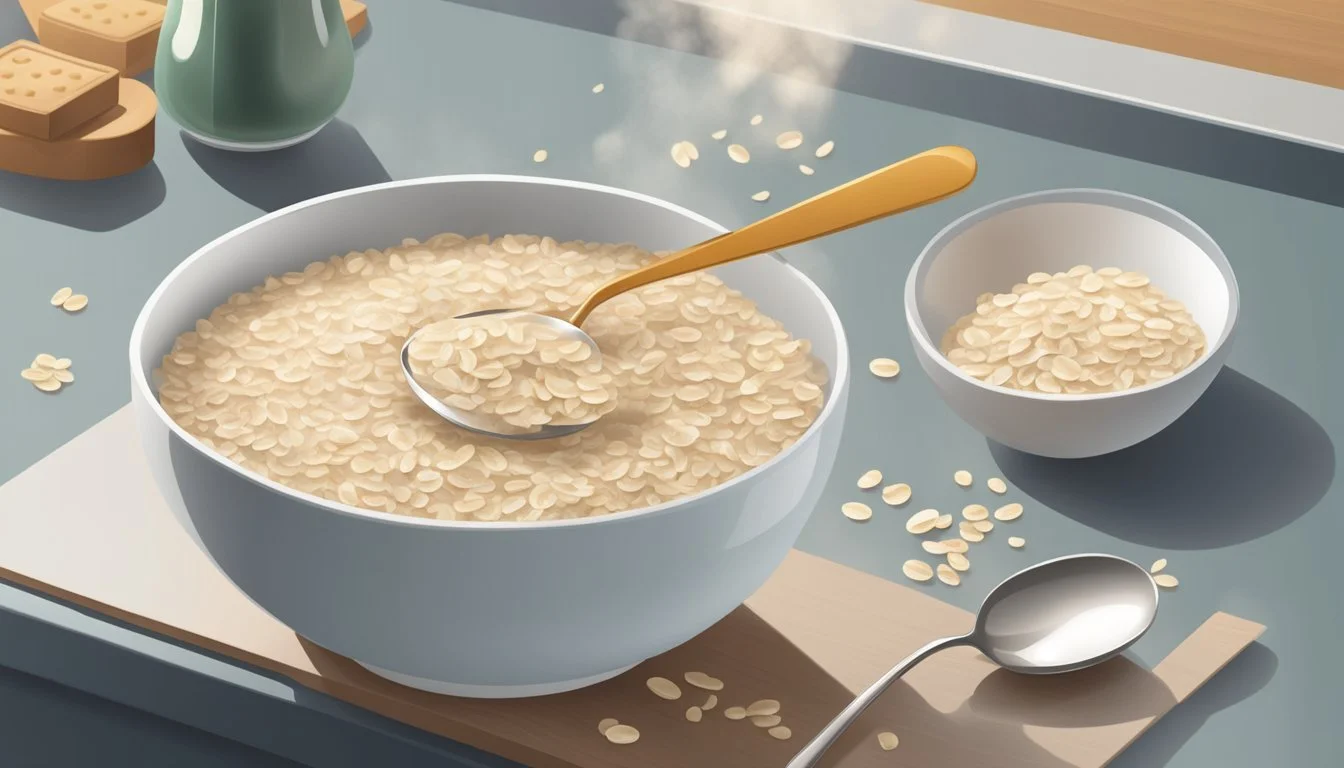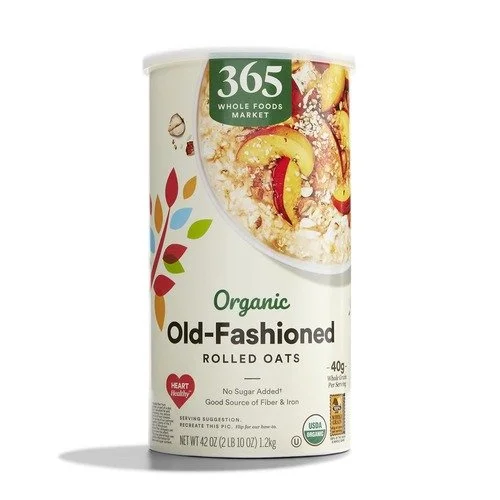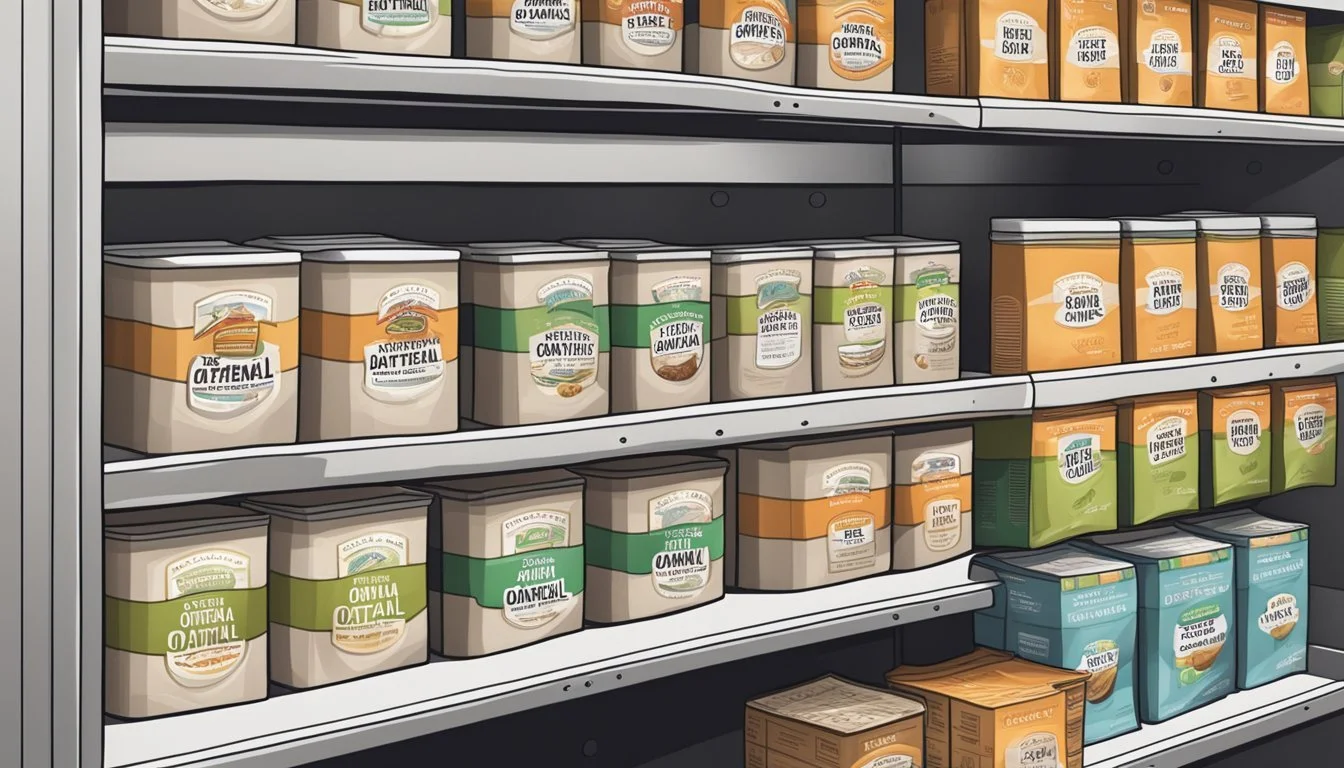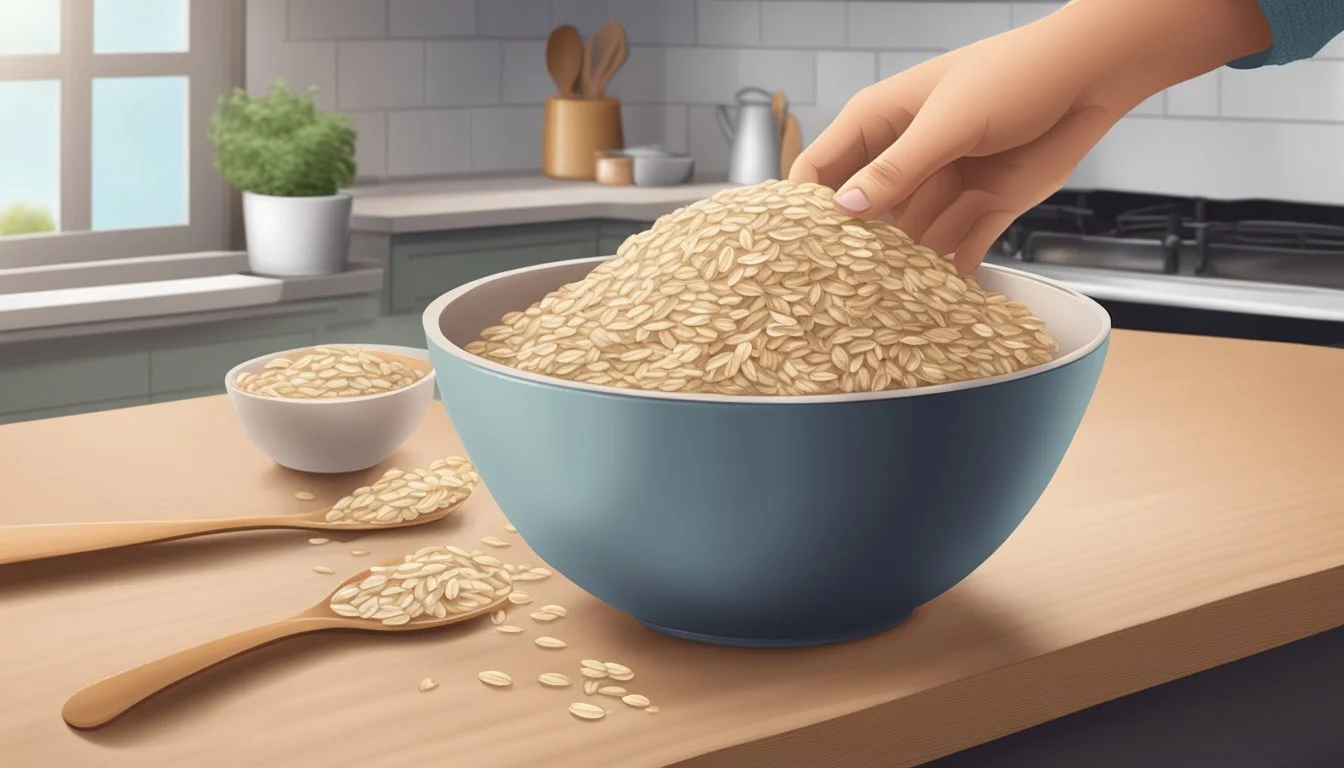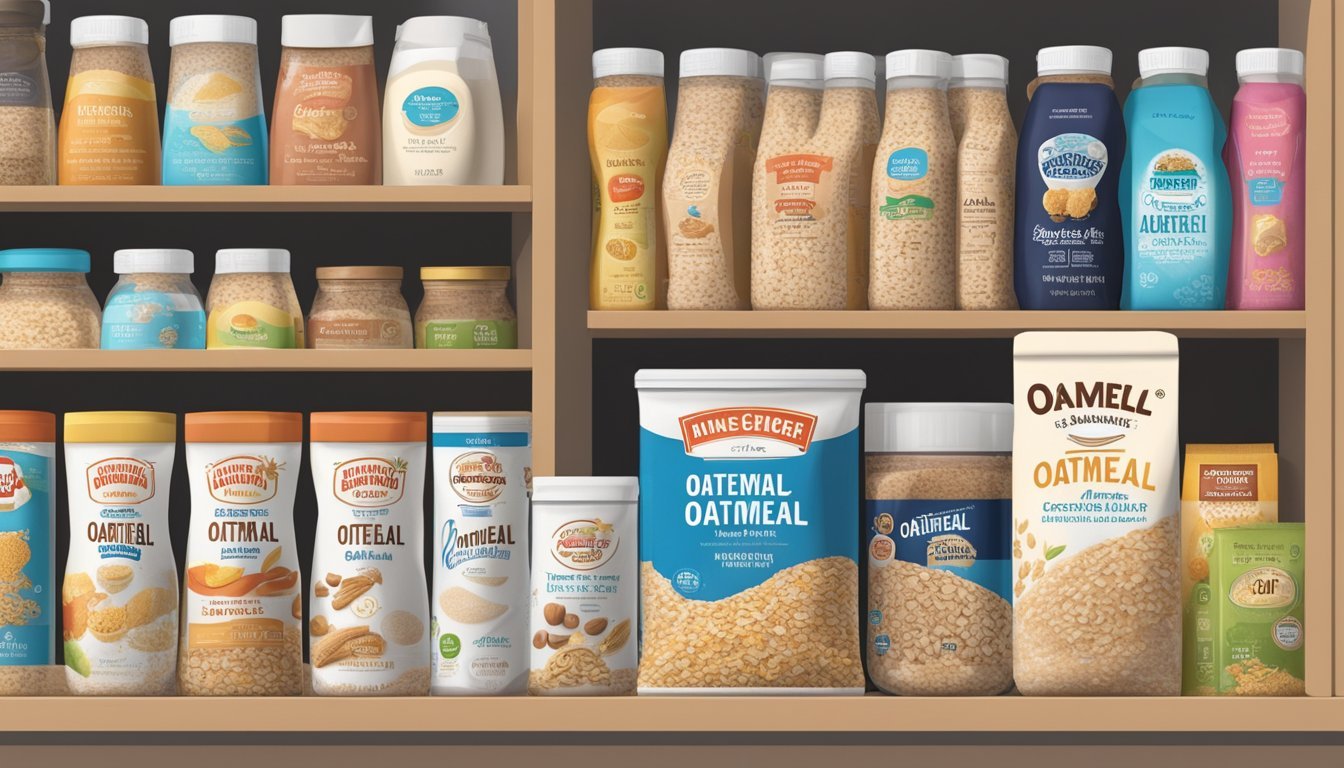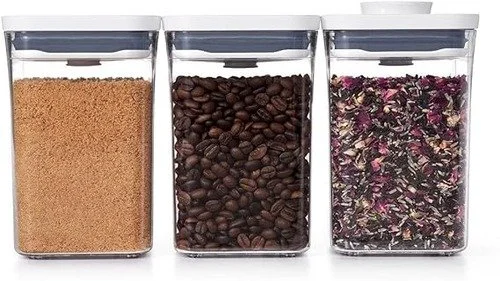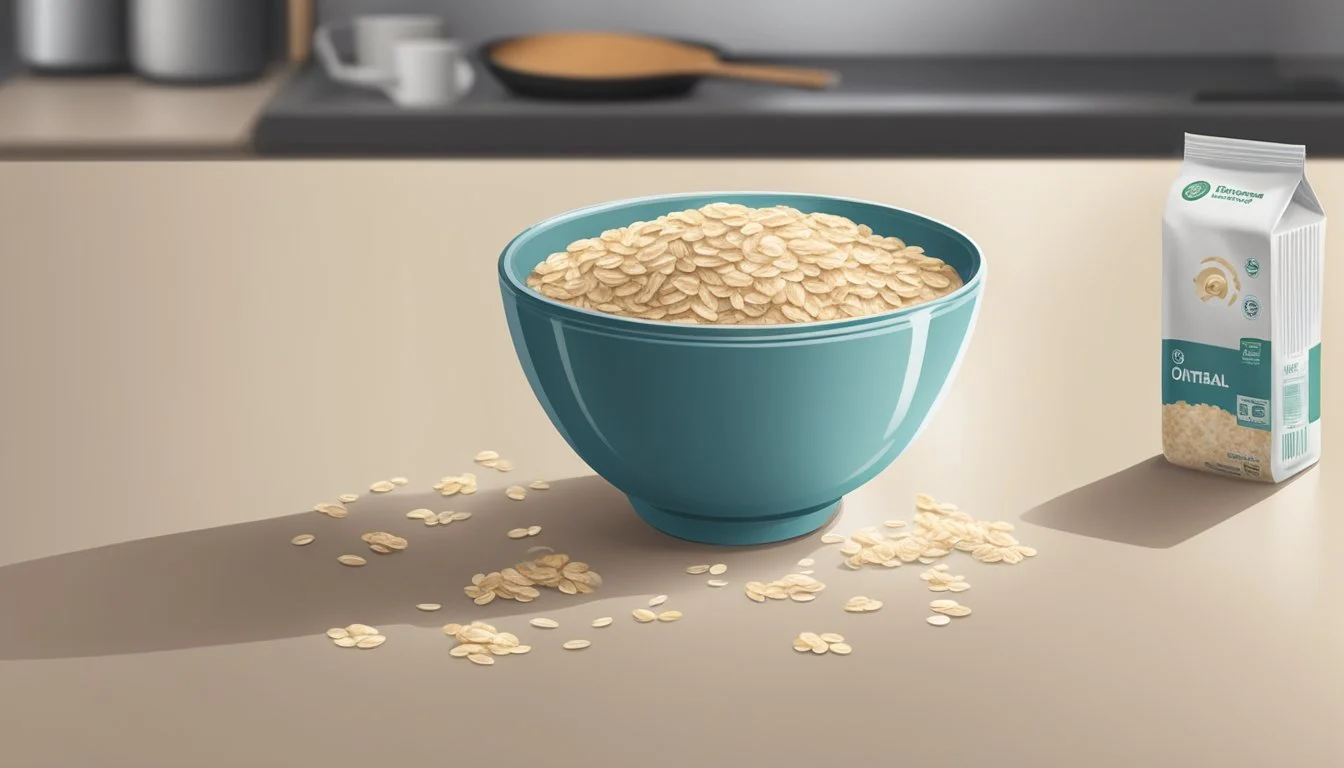How Long Does Instant Oatmeal Last?
Understanding Shelf Life and Storage Tips
Instant oatmeal is a convenient breakfast option for those on the go, offering a quick and easy way to enjoy the health benefits of oats. Packed with fiber, vitamins, and other essential nutrients, instant oatmeal can be a wholesome part of a balanced diet. As with most food items, consumers often question the longevity and shelf life of instant oatmeal, wanting to ensure they're receiving the full nutritional value and taste without compromising food safety.
The shelf life of instant oatmeal varies depending on several factors including the packaging, ingredients, and storage conditions. While instant oatmeal does have an expiration date, understanding the difference between 'best by' dates and actual spoilage is key to avoiding unnecessary waste and ensuring quality. With proper storage, instant oatmeal can generally be safe to consume past its 'best by' date, though the quality might decline over time.
It's important for consumers to recognize the indicators that their oatmeal may no longer be optimal for consumption. Signs such as changes in texture, color, and odor can all hint at spoilage, with the presence of mold being a clear indication that the oatmeal should be discarded. By maintaining proper storage conditions – cool, dry, and away from direct sunlight – the shelf life of instant oatmeal can be maximized, ensuring it remains a convenient and nutritious option for breakfast.
Understanding Oatmeal
The consumption of oatmeal spans various forms and offers considerable health benefits due to its nutritional content. It's essential to differentiate between the main types of oats (how long do oats last?) to appreciate their unique qualities and understand their shelf life.
Oatmeal Varieties
There are three primary oatmeal varieties:
Instant oats: These are pre-cooked, dried, and then rolled. They cook the quickest and typically last between 1 to 2 years.
Rolled oats: (how long do rolled oats last?) Also known as old-fashioned oats, they are steamed and flattened with large rollers. Their shelf life is around 1 to 2 years.
Steel-cut oats: These oats are whole oat groats (how long do oat groats last?) chopped into pieces and offer a chewier texture. They can last up to 2 years.
Each type undergoes a different level of processing, with instant oats being the most processed, which affects their cooking time and potentially their nutritional value.
Enjoy the convenience of doorstep delivery when you buy rolled oats online!
Health Benefits of Oatmeal
Oatmeal, encompassing all varieties, is a core component of a heart-healthy diet. The health benefits it offers are significant due to its rich nutritional profile.
Nutrients in oats include:
Fiber: It aids in digestion and contributes to a feeling of fullness, which can help with weight management.
Antioxidants: These compounds are vital for reducing inflammation and may lower the risk of chronic diseases.
Specifically, the soluble fiber in oats can help improve heart health, as it's known to reduce bad cholesterol levels. The inclusion of oatmeal in one’s diet may contribute to an overall healthier lifestyle.
Shelf Life of Instant Oatmeal
The durability of instant oatmeal varies depending on whether the package remains unopened or has been opened. Factors such as storage conditions and adherence to expiration guidelines heavily influence its longevity.
Unopened Packages
Unopened packages of instant oatmeal are designed for a stable shelf life and can typically last for 1-2 years when stored in a dry pantry or cupboard. The "best by" date on these packages is a quality indicator provided by the manufacturer, suggesting when the product will be at its peak flavor and texture. While it may be safe to consume instant oatmeal after this date, its optimal quality cannot be guaranteed past this point.
Opened Packages
Once an instant oatmeal package is opened, its shelf life reduces due to exposure to moisture, air, and other environmental factors. To maximize freshness, one should transfer the opened oatmeal to an airtight container. In these conditions, the product can remain fit for consumption for several months; however, it is best used within a timeframe considerably shorter than unopened packages. Users should pay close attention to changes in smell, texture, or taste, as these are indicators the oatmeal may have surpassed its prime consumption period.
Factors Influencing Oatmeal Longevity
The longevity of instant oatmeal is contingent upon several key factors, such as storage conditions, packaging, and the type of oats. All of which play significant roles in determining how long your oatmeal will remain fresh and safe for consumption.
Storage Conditions
Ideal storage conditions can greatly extend the lifespan of instant oatmeal. The two primary environmental factors to manage are:
Air: Limited exposure to air is crucial, as it can introduce moisture and contaminants.
Moisture: A dry environment is paramount. Moisture can lead to the growth of mold and other spoilage organisms.
Storing oatmeal in an airtight container, whether it be glass, stainless steel, or ceramic, can help preserve its freshness. Maintaining a cool and dry location, such as a pantry or cupboard, is also recommended to enhance shelf life.
Packaging
Packaging plays a pivotal role in protecting oatmeal from the deteriorating effects of the environment. The following are essential to consider:
Seal: A package with an intact seal safeguards the oats from air and moisture infiltration.
Material: Packaging materials that offer a barrier to light and air, such as thick paper or foil-lined bags, are preferable.
The date on the package, while not a definitive indicator of spoilage, provides a benchmark for evaluating potential quality loss over time.
Type of Oats
The oatmeal's longevity is also influenced by the type of oats it is made from:
Instant Oatmeal: Often has a shorter shelf life due to added flavors and ingredients, lasting typically between 6 to 9 months.
Rolled Oats: More processed than steel-cut oats (how long do steel-cut oats last?), generally have a shelf life of 1-2 years if stored properly.
Steel-Cut Oats: Least processed, they can retain their quality for up to 2 years when kept in an optimal environment.
Each type of oat may have differing tolerances to air and moisture, so adherence to storage guidelines is crucial across all varieties. To ensure the oatmeal remains a wholesome and flavorful dry food, proper care according to these factors is necessary.
I always prefer buying steel-cut oats online because of the added convenience!
Signs of Spoiled Oatmeal
When inspecting oatmeal for spoilage, there are specific signs one should look for. These indicators can alert a consumer to whether the oatmeal is no longer suitable for consumption.
Visual Indicators
One can often spot spoiled oatmeal by looking for discoloration, which may be a sign of contamination. Mold growth is a critical visual indicator. If one sees any moldy patches or spots of mold, the oatmeal should be discarded.
Texture and Taste Changes
The texture of oatmeal is meant to be naturally soft when cooked, but when it's dry, it should not be moist or clumpy. If one finds the texture to be unusually hard or if the oatmeal becomes stale or slimy, it's indicative of it going bad. The taste may also become off; any deviation from the oatmeal's normal, somewhat bland flavor might suggest spoilage.
Smell
One should trust their sense of smell to detect spoilage. If oatmeal emits an unusual or off-odor, it is likely expired and should not be consumed. A musty or sour smell is a strong indicator that the oatmeal has gone bad.
Proper Storage Techniques
Proper storage practices can significantly impact the shelf life and freshness of instant oatmeal. Understanding how to store oatmeal at room temperature and under refrigeration or freezing conditions is essential for maintaining its quality and food safety.
At Room Temperature
Instant oatmeal should be kept in a cool, dark, and dry place to maintain its quality. The best way to achieve this is to store it in airtight containers. These containers prevent moisture and air, which can carry contaminants, from getting to the oatmeal. This method extends the oatmeal's freshness and prevents it from going stale or becoming rancid. Generally, well-sealed containers will keep the instant oatmeal good for up to two years.
Refrigeration and Freezing
After preparing instant oatmeal, any leftovers should be refrigerated within two hours of cooking to maintain food safety. When stored in an airtight container, cooked oatmeal can remain fresh in the refrigerator for 3 to 5 days. For longer-term storage, cooked oatmeal can be frozen. To freeze oatmeal, one should portion it into meal-sized servings and store it in freezer-safe containers or bags. Properly stored, frozen oatmeal maintains its quality for up to six months. Defrost in the refrigerator before reheating and consuming.
Consuming Expired Oatmeal
When it comes to consuming instant oatmeal past its labeled date, one must weigh safety concerns and determine freshness through visual checks. The terms 'expiration,' 'best if used by,' and 'use-by' all have important distinctions that affect the longevity and edibility of oatmeal.
Safety Concerns
Consuming expired oatmeal can pose safety concerns. While food past a 'best if used by' date might not be at its peak quality, it is often still safe to eat. However, the longer it sits past the 'use-by' or 'sell-by' dates, the higher the risk for potential foodborne illnesses. Oatmeal, being a dry food, is less prone to bacterial growth, but care should be taken since microorganisms linked to food poisoning can develop under certain conditions.
Visual Checks
Visual checks are crucial for assessing the safety of expired oatmeal. Here are specific signs to look out for:
Mold or mildew: Indicates spoilage and is a clear sign not to consume the oats.
Off-odor: A rancid or unusual smell can signal that the oatmeal has gone bad.
Texture: If the dry oatmeal appears slimy or clumpy, it should be discarded.
If none of these signs are present, the oats may still be safe to consume, but always proceed with caution.
Expiration Versus Freshness
Distinguishing between expiration dates and freshness is key. An expired oatmeal packet doesn't necessarily mean the contents are unsafe to eat. A packet past its 'best if used by' date might have a slight change in flavor or texture but could generally be considered safe. However, true freshness can be compromised over time, and while not always unsafe, past-peak oatmeal may not provide the best eating experience. Regularly rotating food supplies ensures that items consumed are as fresh as possible, minimizing the risk of encountering bad oats.
Creative Uses for Old Oatmeal
Old instant oatmeal that's past its prime for consumption can be repurposed in a variety of useful ways. This section explores practical applications beyond the breakfast table, particularly focusing on non-edible alternatives, as well as efficient incorporation into the composting process.
Non-Food Uses
One can employ expired instant oatmeal as a natural skin exfoliant — it can be used within homemade facial scrubs to slough off dead skin without harsh chemicals. For a simple, effective scrub, one might combine oatmeal with water or oil to create a paste, then gently massage onto the face before rinsing.
Additionally, expired oatmeal can serve as a soothing agent for skin irritations such as eczema. Binding the oatmeal in a cloth and adding it to a bath can help to alleviate discomfort from dry, itchy skin.
Composting
Expired oatmeal can be an excellent addition to a compost bin or pile. When added to compost, oatmeal acts as a green material (rich in nitrogen) and supports the microorganisms essential for breaking down organic waste. Here’s how one might include expired oatmeal in their composting efforts:
Mixing into the compost: Ensure the oatmeal is spread thinly in the compost to avoid clumping.
Balancing with browns: Add carbon-rich "browns" like dead leaves or shredded paper to maintain a balanced compost composition.
Note: When composting, it’s important to avoid adding cooked oatmeal with added sugars or flavors, as these may attract pests.
The Impact of Additives
Additives in instant oatmeal can significantly influence both the flavor and shelf life of the product. Flavored oatmeal packets typically include a range of additives such as artificial flavors, fruit pieces, cream, and milk powder. These components are added to enhance taste and provide a more convenient, quick meal option.
While additives can make instant oatmeal more appealing to the palate, they may also reduce its longevity. Here’s how some common additives affect shelf life:
Artificial Flavors: These substances don't usually have a large impact on shelf life, but they can degrade over time, causing changes in the oatmeal's taste.
Dried Fruit (how long does dried fruit last?): Fruit pieces can shorten the shelf life due to their natural sugars and potential to attract moisture, leading to quicker spoilage.
Milk Powder and Cream: Products containing these milk-based ingredients may spoil faster as fats can go rancid.
Sugars: Added sugars can extend shelf life by acting as preservatives, but they can also draw moisture, which can lead to the growth of mold if packaging is compromised.
In summary, the presence of additives creates a diverse effect on the durability of instant oatmeal. Consumers should pay attention to storage conditions:
Additive Effect on Shelf Life Storage Tip Artificial Flavors Minimal effect Store in cool, dry place Dried Fruit Potential to reduce shelf life Keep sealed, avoid humidity Milk Powders May shorten due to fat spoilage Use quickly and store away from heat Sugars Can extend or reduce, depending on conditions Ensure the packaging is airtight
Manufacturers recommend adhering to the best-before dates, and consumers should examine packets for signs of moisture or unusual smells, which may indicate spoilage.
Instant Oatmeal in the Diet
Instant oatmeal, recognized for its convenience, serves as a popular breakfast food. It provides a quick and easy way to enjoy a warm meal, especially for those with a fast-paced lifestyle. Given its nutritional value, instant oatmeal is often considered a staple in health-conscious diets.
The main appeal of instant oatmeal lies in its time efficiency. Quick oats (how long do quick oats last?) are simply rolled oats that have been chopped finely to reduce cooking time, allowing a hot breakfast to be prepared in minutes. For those who plan ahead, overnight oats offer a no-cook alternative, where oats are soaked in a liquid, such as milk or yogurt, and left to soften overnight. This preparation method also allows for the oats to absorb the flavors of added ingredients like fruits and nuts (how long do nuts last?).
From a nutritional standpoint, instant oatmeal can be a beneficial part of a diet. It typically contains dietary fiber, which may aid in digestion and help maintain regular bowel movements. Additionally, oatmeal can contribute to a healthier gut microbiome.
However, consumers should be aware that instant oatmeal packets often contain added sugars and flavorings. To maximize the health benefits, one could opt for plain oats and add their own toppings.
Here is a nutritional snapshot of instant oatmeal:
Nutrient Benefit Dietary Fiber Aids digestion, improves stool consistency Carbohydrates Provides energy for daily activities
Incorporating instant oatmeal into a diet can offer a balanced start to the day, particularly when it is tailored with wholesome mix-ins to boost the nutritional profile.
Additional Tips for Oatmeal Longevity
When considering the longevity of instant oatmeal, the type of oats plays a significant role. Instant oatmeal, rolled oats, and commercially processed oats each have different shelf lives. To maximize the duration these oat varieties stay fresh, several measures can be taken.
Storage Container: For all types of oats, an airtight storage container is crucial to prevent exposure to moisture and pests. Containers made of glass, metal, or BPA-free plastic are excellent choices. Ensure the seal is tight and the container is completely dry before filling it with oats.
Storage Area: Store your oats in a cool, dark, and dry place to prevent the degradation of fats in the oats, which can lead to them going bad. Cupboards away from heat sources or a pantry are ideal.
Rolled Oats and Other Varieties: For rolled oats and other non-instant varieties, the same rules apply. However, the presence of fats is less concerning due to the more extensive processing, which stabilizes these oats.
Use By Date: Pay attention to the "use by" date; while oats can often last beyond this, it is a good indicator of optimal quality.
Check for Smell or Moisture: Any change in smell or appearance, specifically the presence of moisture or mold, indicates the oats have gone bad.
Limit Liquid Entry: When preparing oats, only add the necessary amount of liquid to prevent spoilage.
In summary, the key to prolonging the shelf life of oatmeal varieties hinges on proper sealing, stable temperatures, and vigilant observation. By adhering to these guidelines, one may preserve their oats' freshness and usability effectively.
Comparing Oatmeal to Other Dry Foods
Shelf Life of Dry Foods
When stacked against other pantry staples, instant oatmeal holds its ground with a respectable shelf life. Similar to other dry foods, the longevity of instant oatmeal is defined by its expiration or 'best by' date, a manufacturer's estimation of when the product will start to decline in quality, rather than safety.
Rice: White rice can last 4-5 years or more if stored properly, far outlasting instant oatmeal. Brown rice, however, because of its natural oils, has a shorter shelf life of approximately 6 months.
Pasta (how long does pasta last?): Dry pasta, kept sealed, can last about 1-2 years in the pantry, which is comparable to the shelf life of instant oatmeal.
Conditions Affecting Longevity
The durability of these foods largely depends on how they are stored:
Dry Food In Pantry In Refrigerator In Freezer Oatmeal 1-2 years N/A N/A Rice 4-5 years N/A N/A Pasta 1-2 years N/A N/A
Impact of Moisture and Pests
Moisture and pest control are crucial for prolonging the shelf life of dry foods. They must be kept in airtight containers and in cool, dry places to prevent spoilage from moisture and infestations.
Take advantage of the wide variety of options when you shop for airtight containers online!
Nutritional Degradation
Over time, dry foods may not spoil but could lose some nutritional value. Instant oatmeal may also lose flavor but remains safe to consume past its 'best by' date, provided there are no signs of spoilage such as mold, off-odors, or pests.
Each food product has its unique storage recommendations to maximize shelf life. Consumers are encouraged to follow these guidelines to ensure food quality and safety.
Oatmeal and Food Safety
When considering the safety of consuming instant oatmeal, one must be aware of the product’s longevity and signs indicating spoilage. Instant oatmeal has a shelf life which is often indicated by a "best by" or "use by" date on the packaging.
Food safety is paramount; to prevent foodborne illness, consumers should store oatmeal in a dry, cool place away from direct sunlight. Here are signs to watch out for, indicating that oatmeal may no longer be safe to eat:
Signs of moisture: Moisture can lead to mold growth. If the oatmeal appears clumpy, damp, or has visible mold, it should be discarded.
Off odors: A stale or sour smell can signal the deterioration of the oatmeal's quality.
Discoloration: Any abnormal color changes could indicate spoilage.
Although instant oatmeal cannot lower cholesterol or impact nutrients after spoilage, it's worth noting that when consumed within its shelf life, it can offer health benefits such as lowering cholesterol due to the presence of beta-glucan, a soluble fiber found in oats.
Proper storage is key to maintaining the quality and safety of oatmeal. Oats can last well past the date on the package when stored correctly, but always assess for spoilage before consumption.
Lastly, it is not recommended to repurpose expired oatmeal for consumption, and it should never be used as a substitute for meat or other nutrient-rich foods in a diet. It is best practice to ensure all food items, including oatmeal, are within their consumption period to enjoy their full nutritional benefits.

